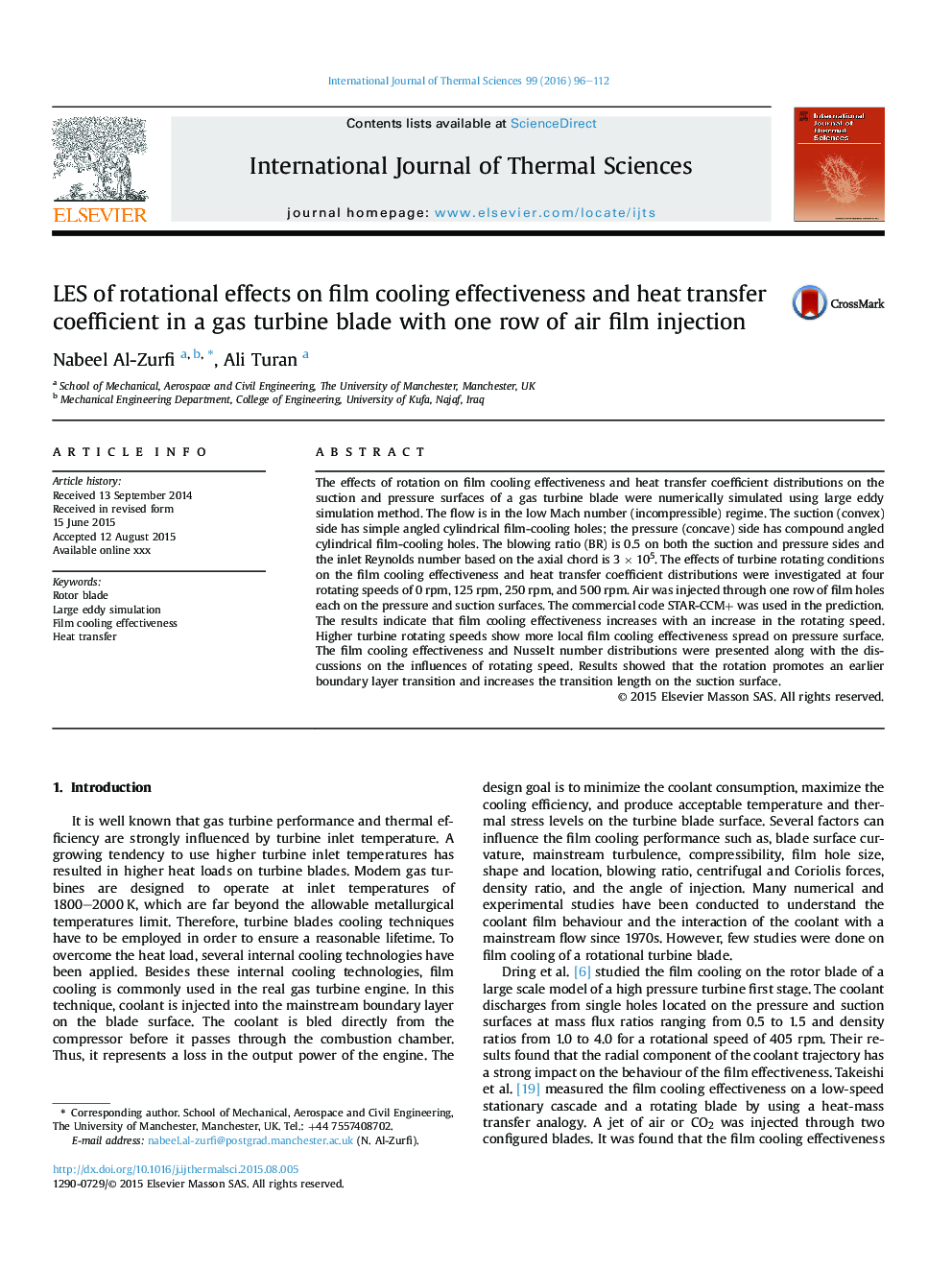| Article ID | Journal | Published Year | Pages | File Type |
|---|---|---|---|---|
| 669230 | International Journal of Thermal Sciences | 2016 | 17 Pages |
Abstract
The effects of rotation on film cooling effectiveness and heat transfer coefficient distributions on the suction and pressure surfaces of a gas turbine blade were numerically simulated using large eddy simulation method. The flow is in the low Mach number (incompressible) regime. The suction (convex) side has simple angled cylindrical film-cooling holes; the pressure (concave) side has compound angled cylindrical film-cooling holes. The blowing ratio (BR) is 0.5 on both the suction and pressure sides and the inlet Reynolds number based on the axial chord is 3Â ÃÂ 105. The effects of turbine rotating conditions on the film cooling effectiveness and heat transfer coefficient distributions were investigated at four rotating speeds of 0Â rpm, 125Â rpm, 250Â rpm, and 500Â rpm. Air was injected through one row of film holes each on the pressure and suction surfaces. The commercial code STAR-CCM+ was used in the prediction. The results indicate that film cooling effectiveness increases with an increase in the rotating speed. Higher turbine rotating speeds show more local film cooling effectiveness spread on pressure surface. The film cooling effectiveness and Nusselt number distributions were presented along with the discussions on the influences of rotating speed. Results showed that the rotation promotes an earlier boundary layer transition and increases the transition length on the suction surface.
Related Topics
Physical Sciences and Engineering
Chemical Engineering
Fluid Flow and Transfer Processes
Authors
Nabeel Al-Zurfi, Ali Turan,
